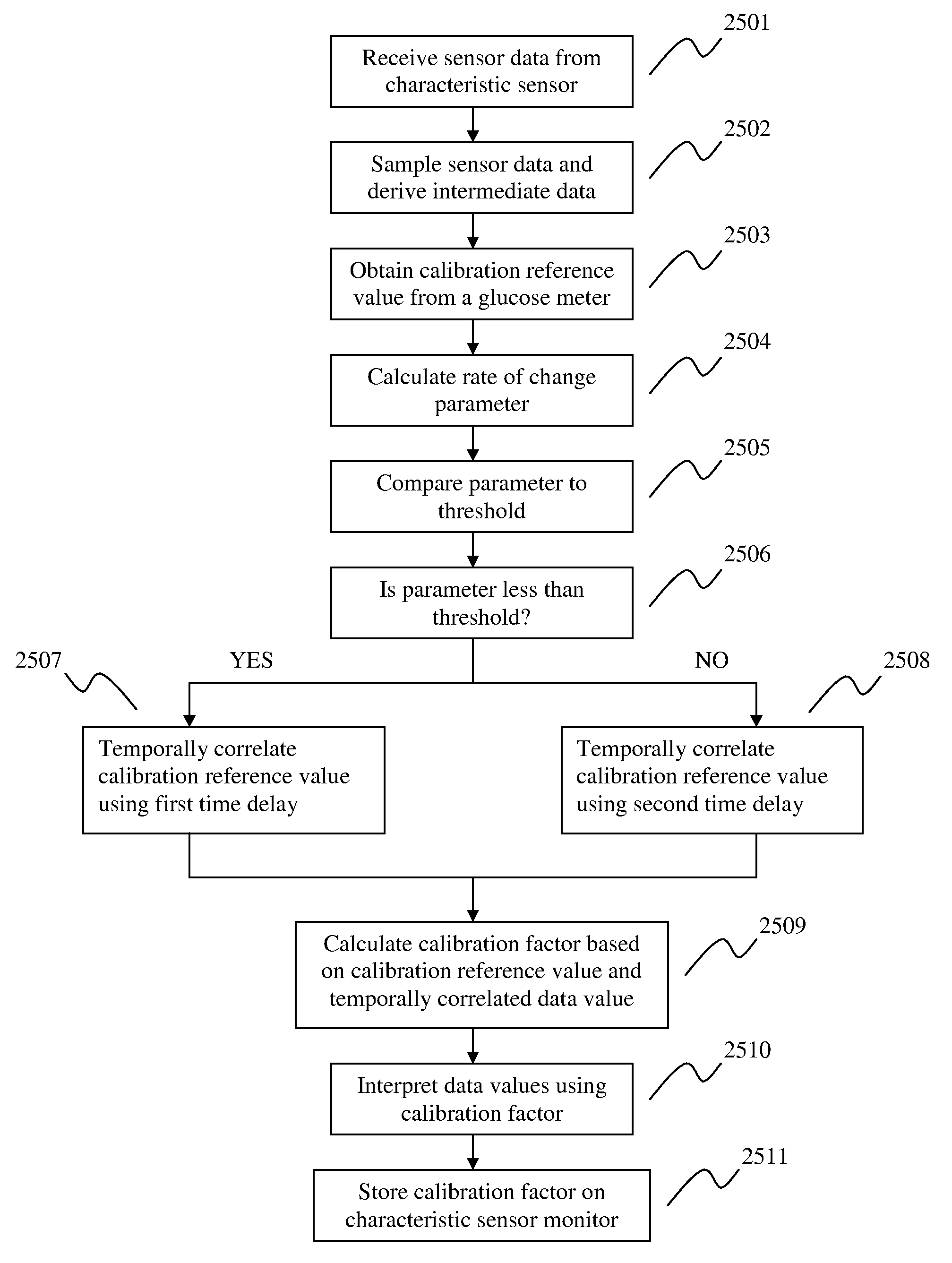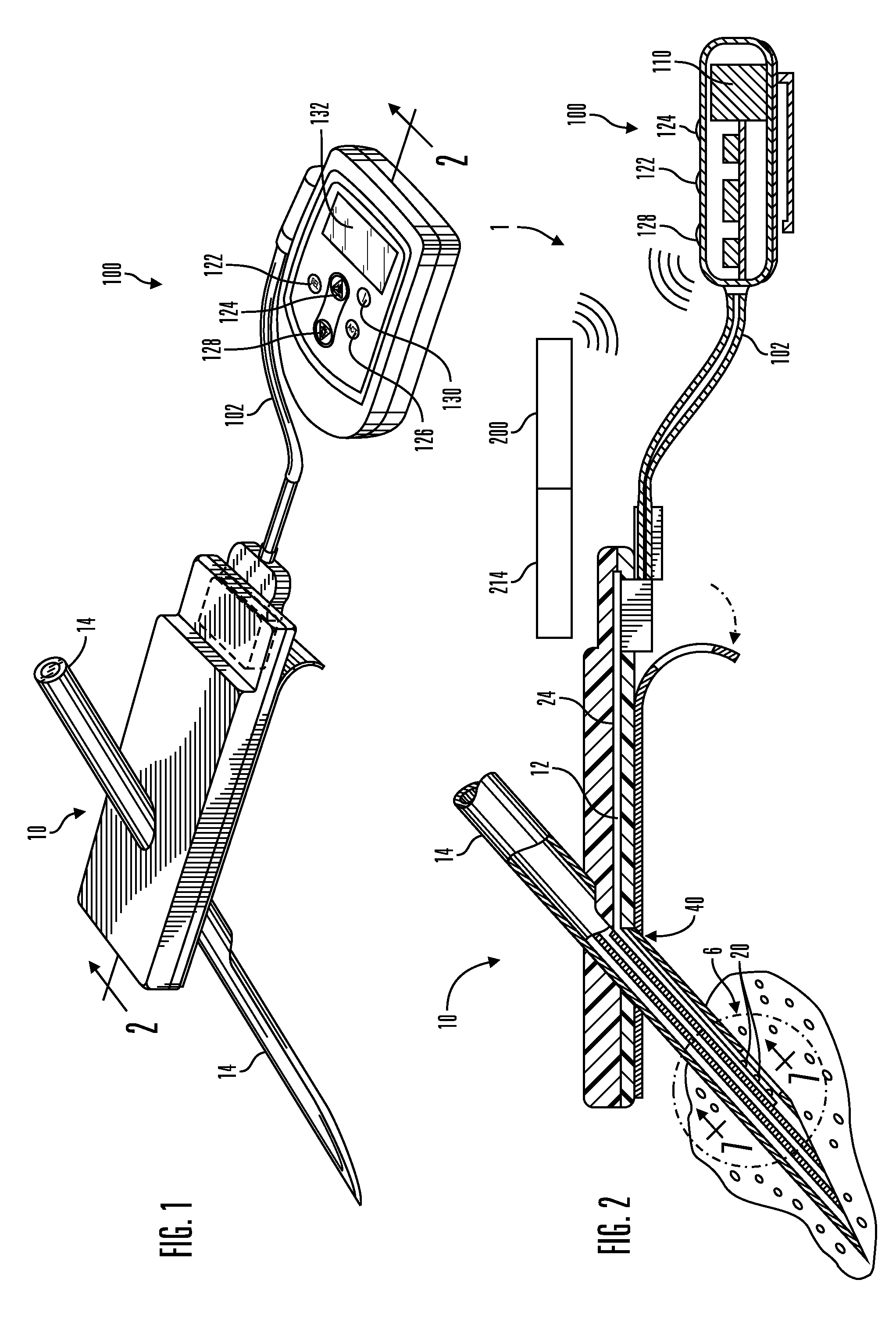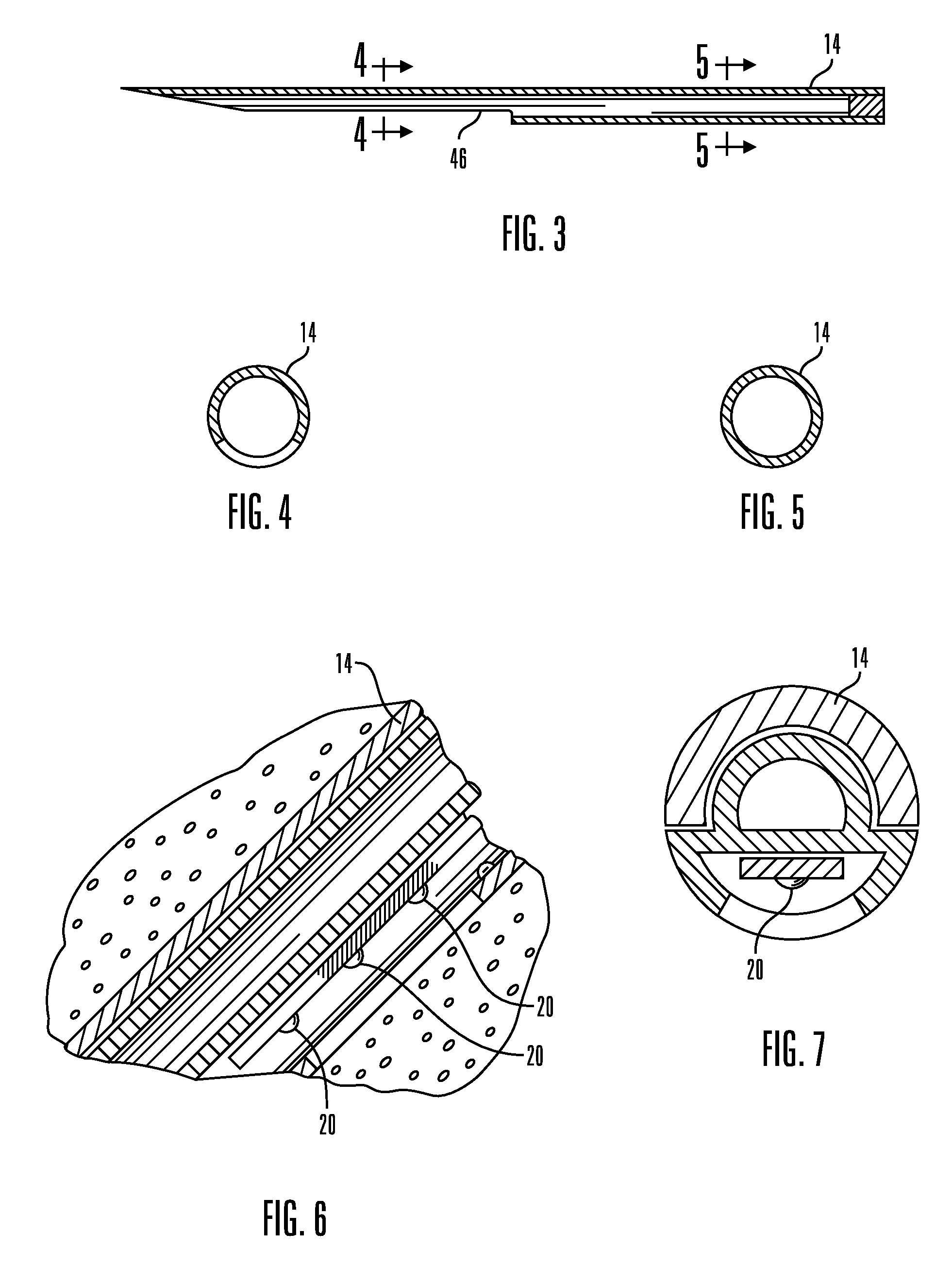System and methods for calibrating physiological characteristic sensors
a physiological characteristic and sensor technology, applied in the field of glucose monitor systems, can solve the problems of ineffectiveness and accuracy of none to date, and achieve the effect of reducing the weight of the current calibration factor and fast changing ra
- Summary
- Abstract
- Description
- Claims
- Application Information
AI Technical Summary
Benefits of technology
Problems solved by technology
Method used
Image
Examples
Embodiment Construction
[0058]As shown in the drawings for purposes of illustration, the invention is embodied in calibration methods for a glucose monitor that is coupled to a sensor set to provide continuous data recording of readings of glucose levels from a sensor for a period of time. In preferred embodiments of the present invention, the sensor and monitor are a glucose sensor and a glucose monitor for determining glucose levels in the blood and / or bodily fluids of a user. However, it will be recognized that further embodiments of the invention may be used to determine the levels of other body characteristics including analytes or agents, compounds or compositions, such as hormones, cholesterol, medications concentrations, viral loads (e.g., HIV), bacterial levels, or the like. The glucose sensor is primarily adapted for use in subcutaneous human tissue. However, in still further embodiments, one or more sensors may be placed in other tissue types, such as muscle, lymph, organ tissue, veins, arteries...
PUM
 Login to View More
Login to View More Abstract
Description
Claims
Application Information
 Login to View More
Login to View More - R&D
- Intellectual Property
- Life Sciences
- Materials
- Tech Scout
- Unparalleled Data Quality
- Higher Quality Content
- 60% Fewer Hallucinations
Browse by: Latest US Patents, China's latest patents, Technical Efficacy Thesaurus, Application Domain, Technology Topic, Popular Technical Reports.
© 2025 PatSnap. All rights reserved.Legal|Privacy policy|Modern Slavery Act Transparency Statement|Sitemap|About US| Contact US: help@patsnap.com



